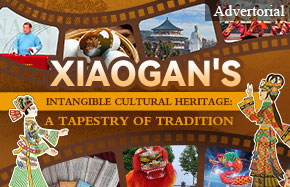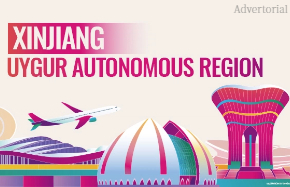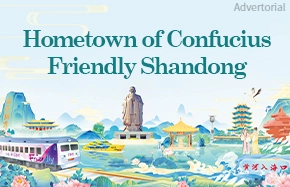History told through Terracotta figurines

A total of 141 sets of terracotta figurines are on display at an exhibition which opened on Aug 7 at the Emperor Qinshihuang’s Mausoleum Site Museum in Xi’an, Shaanxi province.
It is the first exhibition focused on original pottery figurines which are in the same style as those made in the period of the Qin Dynasty (221-206 BC) and the Han Dynasty (206 BC-AD 220).
Pottery figurines were a kind of sacrificial objects used to replace real humans in ancient China. The custom can be traced back to the Spring and Autumn Period (770-476 BC) and became popular in the Qin and Han dynasties. The Terra-Cotta Warriors are part of that custom.
However, the figurines are different particularly in size and expressions, which differed between the two dynasties, illustrating changing social backgrounds and development.
This exhibition is intended to promote the history of the Qin and Han dynasties from aspects such as military, politics, economies and livelihoods through the features of figurines and help visitors learn more about the ancient cultures.
The exhibits are provided by the Emperor Qinshihuang’s Mausoleum Site Museum and the Hanyangling Museum. The show will last until August of next year.
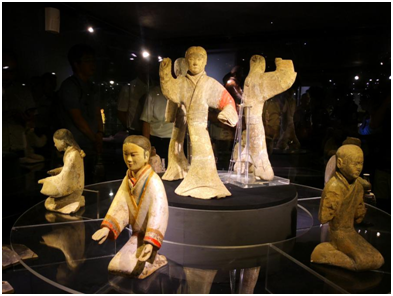
More than 100 sets of pottery figurines are on display at the Emperor Qinshihuang’s Mausoleum Site Museum. [Photo provided to chinadaily.com.cn]
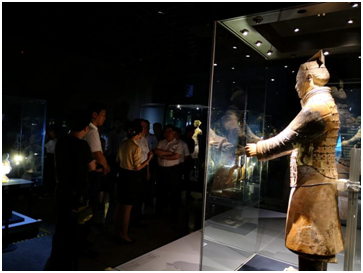
Guides explain the different social conditions and livelihoods of the Qin and Han dynasties as shown through the features of the terracotta figurines. [Photo provided to chinadaily.com.cn]
















